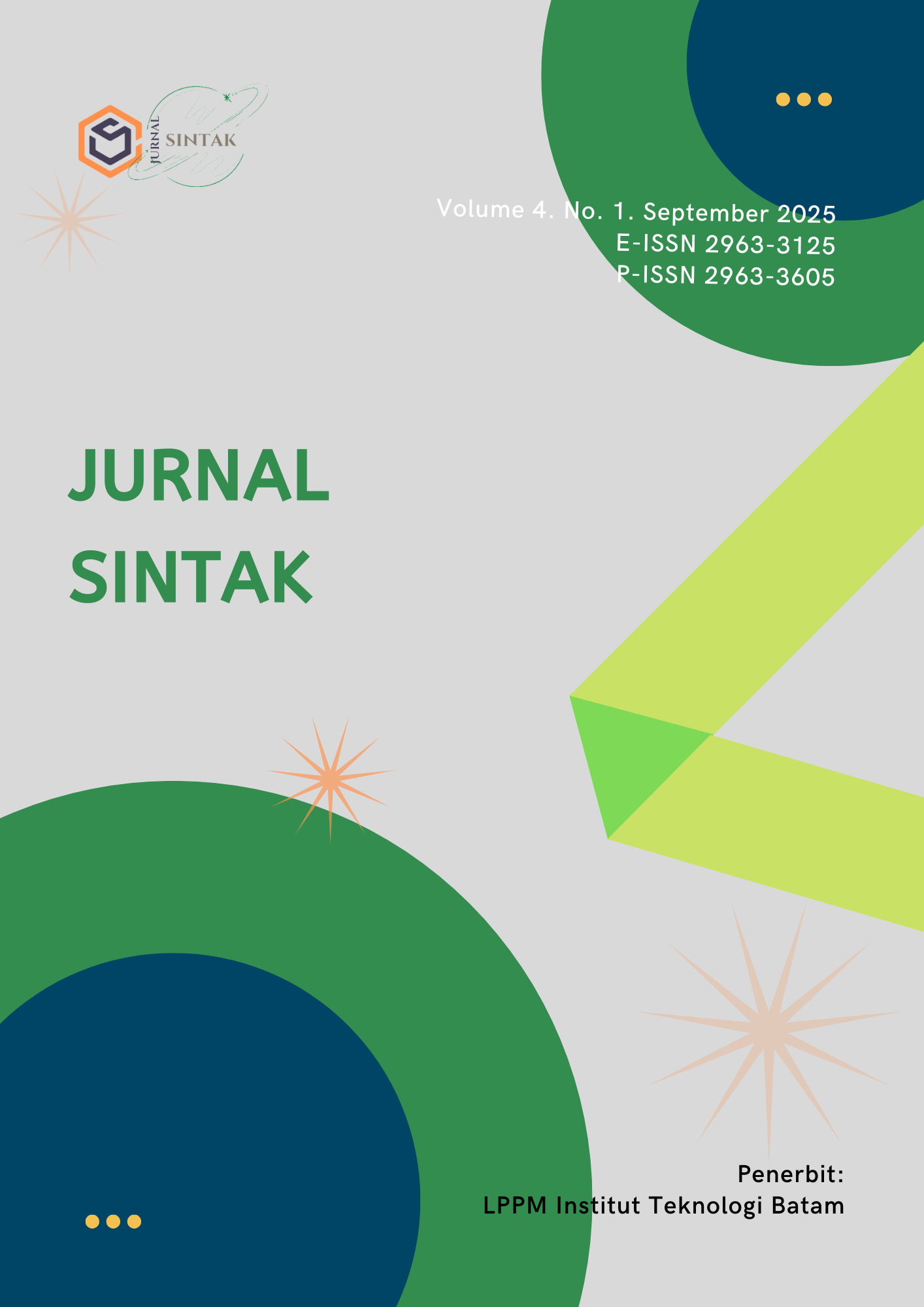Environmentally Friendly Bioplastic Derived from Banana Peel (Musa paradisiaca) Waste and Agar-Agar Adhesive: An Experimental Study Employing a Completely Randomized Design (CRD)
DOI:
https://doi.org/10.62375/jsintak.v4i1.712Keywords:
Agar, Banana Peel, Bioplastic, CRD, Mechanical PropertiesAbstract
This study aims to develop eco-friendly bioplastics from banana peel (Musa paradisiaca) waste with natural binder agar. The research employed a Completely Randomized Design (CRD) with one factor and three treatment levels of banana peel extract: 15 ml, 30 ml, and 45 ml. Each treatment was replicated three times, with three observed variables: tensile strength, maximum load, and water absorption. The analysis of variance showed that banana peel concentration significantly affected tensile strength and maximum load (p < 0.05), but not water absorption (p > 0.05). Further Duncan’s test indicated that the 30 ml treatment resulted in the best mechanical performance. These findings suggest that a formulation using 30 ml banana peel extract, 1 gram of agar, and 1 ml of glycerol can produce bioplastics with strong mechanical properties. This formulation holds potential as an environmentally friendly alternative to conventional plastics
References
N. A. Azieyanti, A. Amirul, S. Z. Othman, and H. Misran, “Mechanical and Morphology Studies of Bioplastic-Based Banana Peels,” in Journal of Physics: Conference Series, Institute of Physics Publishing, Jun. 2020. doi: 10.1088/1742-6596/1529/3/032091.
D. Maria Abel, J. De Castro Ruas, A. De Castro Ruas, and T. Kok, “Characterization Properties of Banana Peel as a Promising Alternative for Bioplastic,” in E3S Web of Conferences, EDP Sciences, Mar. 2023. doi: 10.1051/e3sconf/202337400008.
F. Armalia Putri, A. Rianjanu, and W. Solafide Sipahutar, “Cellulose Impact on Bioplastic Performance: A Study on Mechanical Strength, Physical Properties, and Degradation of Water Hyacinth and Kepok Banana Peel-derived Materials,” 2024.
A. Lathifah, T. Rahmawati, H. Uin, and W. Semarang, “Workshop Penulisan Karya Ilmiah Multidisipliner 2023 SHEs: Conference Series 6 (4) (2023) 316-324 Making BIOPLASTICS from Banana Peel Waste with Agar Adhesive.” [Online]. Available: https://jurnal.uns.ac.id/shes
“3817-Article Text-15317-1-10-20250203”.
G. K. K. Ishara, P. A. Koliyabandara, and G. Samarakoon, “Eco-friendly bio-composite sheets: a study on the utilization of banana peels, cassava starch, and banana stem fibers,” Frontiers in Sustainability, vol. 5, 2024, doi: 10.3389/frsus.2024.1410986.
G. Indah Budiarti, M. Suzan Triyastuti, I. Viska Rosdia Safira, and R. Satya Nugraheni, “CHEMICA : Jurnal Teknik Kimia Development of Biodegradable Plastic from Various Banana Peels,” vol. 12, no. 1, pp. 45–52, 2025, doi: 10.26555/chemica.v12i1.224.
V. A. Handayani et al., “Comparison of Tensile Properties Data Analyzed Using ANOVA and MANOVA Methods: Case Study Data of PVA-Gambir Blend Film,” Pertanika J. Sci. Technol., vol. 33, no. 1, pp. 525–530, 2025, doi: 10.47836/pjst.33.1.24.
Downloads
Published
How to Cite
Issue
Section
License
Copyright (c) 2025 Laras Devikaduri, Vitri Aprilla Handayani

This work is licensed under a Creative Commons Attribution 4.0 International License.














